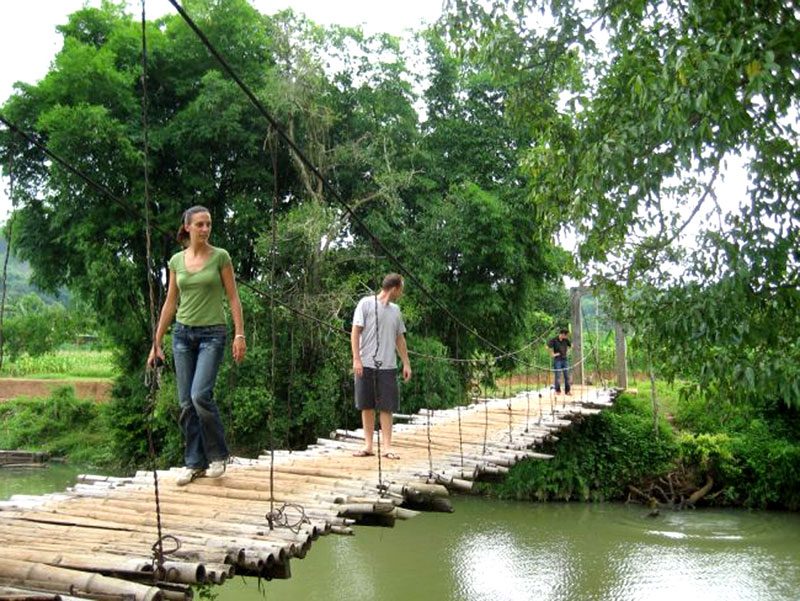



Photo: Foreign tourists visit Tu Ne commune (Tan Lac)
Le Thi Van Hue, CECAD Deputy Director, said that the project aimed to step up community-based tourism activities so as to improve locals’ living conditions, preserve Muong culture and protect the environment. To implement the project, CECAD coordinated with Hanoi-based HG Travel Company to assist Cu village in building a spacious stilt house to serve cultural activities and community-based tourism. HG Travel Company also launched a two-day, one-night tour of Tu Ne and Thanh Hoi commune.
Along with the above-mentioned stilt house, several local households invested in building houses on stilts to develop tourism. Currently, the commune has four stilt houses offering homestay services for visitors.
Taking part in HG Travel’s tour, on the first day, visitors can enjoy Muong people’s traditional dishes, discover their life through visiting households who earn their living by weaving or keeping bees, soaking feet in warm herbal water, and watching folk music of Muong people. On the second day, visitors walk to Thanh Hoi commune and contemplate one of the biggest banyan trees in Vietnam.
About 100km from Hanoi, convenient transport, typical culture of Muong people and the investment from the CECAD and HG Travel are favourable conditions for Tu Ne commune to develop community-based tourism. However, its development has yet to meet potential.
We stop over in Cu village, and visit the stilt house invested by the CECAD and HG Travel. Since 2012, the house has been managed by the family of Bui Van Anh. He said: "We are responsible for taking care of and using the house to develop community-based tourism with other locals in the commune. We don’t have to pay any fees and can enjoy all benefits from serving visitors”.
In the time ahead, efforts will be exerted to raise public awareness of protecting the environment and landscape and to make visitors experience the typical culture of the locality./.